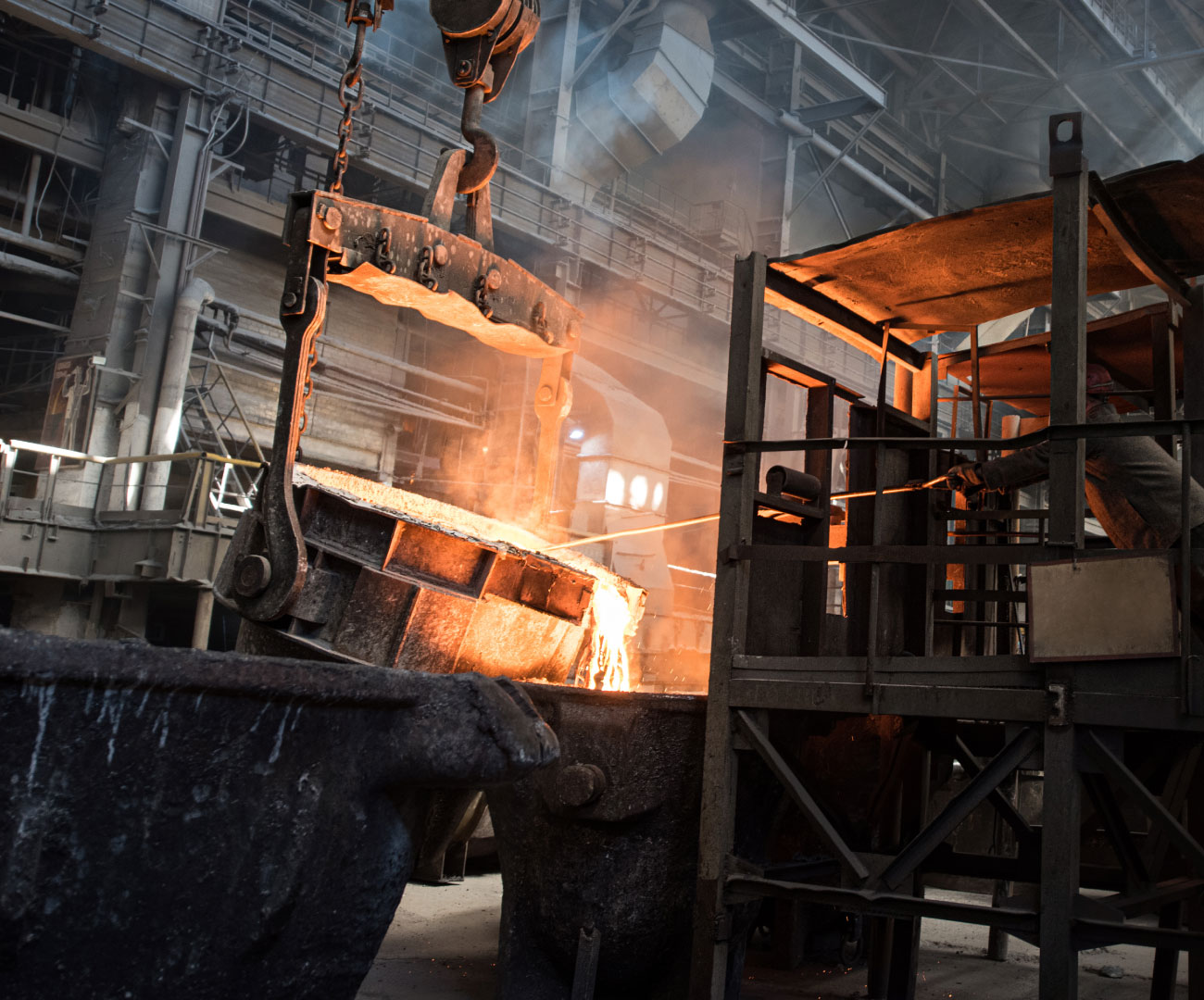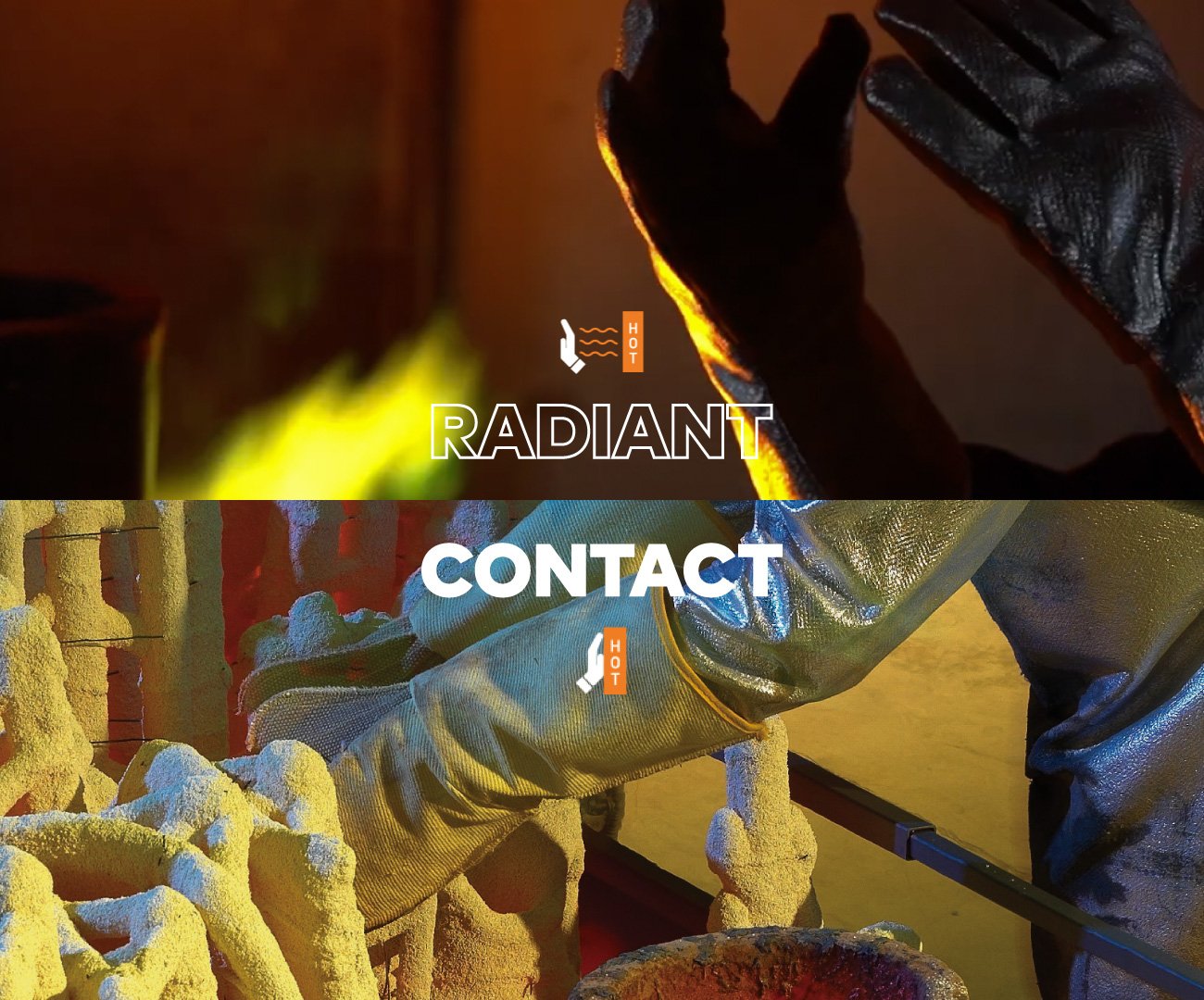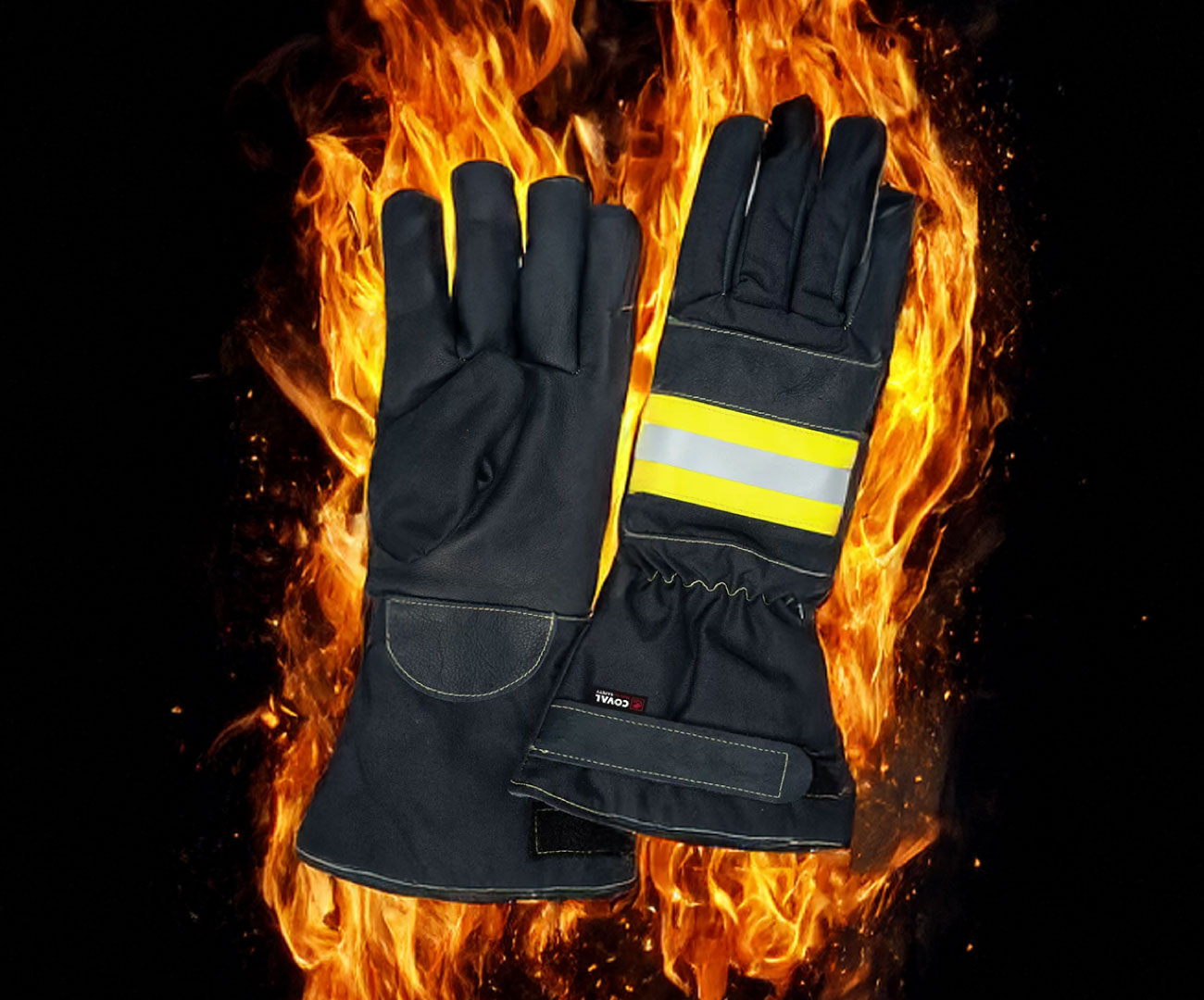Heat resistance test on aramid gloves for foundry

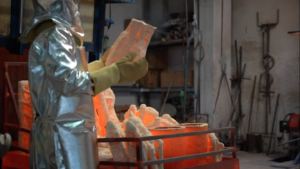 Foundry gloves play a vital role in ensuring the safety of workers exposed to extreme temperatures and burn risks. That’s why we are committed to showing our distributors what safety means to us – not just in theory but in practice as well.
Foundry gloves play a vital role in ensuring the safety of workers exposed to extreme temperatures and burn risks. That’s why we are committed to showing our distributors what safety means to us – not just in theory but in practice as well.
At Coval, we manufacture various types of gloves for the foundry industry, catering, welding, each with distinct features, providing solutions for different risk categories, sometimes combined.
To explain our glove lines to retailers, distributors, and agents, we usually conduct a heat test to measure the glove’s resistance in terms of thermal insulation and protection durability.
How the heat resistance test on gloves works
Certified to EN 407 standard, all our heat-resistant gloves undergo a contact heat test. The purpose of the test with distributors and agents is to demonstrate the varying resistance of some glove models when exposed to contact heat from a heavy object – in this case, a clothes iron.
Knowing our products, we are confident in this test: thanks to the quality of the technical fabrics used and resistance tests performed by external laboratories, we know our gloves will pass the trial.
Once the glove is worn, the clothes iron is placed on the palm of the hand to monitor the time of resistance to contact heat.
Behavior of foundry gloves during the heat resistance test
 In this specific test, we compared three different types of gloves suitable for the industrial environment:
In this specific test, we compared three different types of gloves suitable for the industrial environment:
- Aramid glove S1TK/18 (1 layer heat-resistant)
- Aramid glove S5TK/18 (2 layers heat-resistant)
- Aramid glove F2AGP/18TK (4 layers heat-resistant)
The test allows us to evaluate the gloves’ performance under prolonged contact heat conditions. Starting with the first glove, we already observe good resistance with just one layer of heat-resistant fabric.
Moving on to the other two models, the resistance tends to double with each additional layer of heat-resistant fabric, reaching over 2 minutes in the case of the F2AGP/18TK model with 4 layers.
Heat-resistant gloves: choosing the ideal model
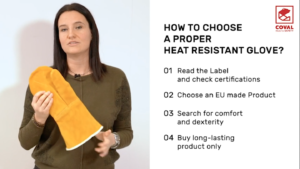 There are several factors to consider to ensure you choose the ideal heat-resistant glove for your needs: from the working environment to the type of heat, here are the points to keep in mind during the selection process:
There are several factors to consider to ensure you choose the ideal heat-resistant glove for your needs: from the working environment to the type of heat, here are the points to keep in mind during the selection process:
Working environment and application: It’s essential to carefully assess the environment you work in. Working in the industry is different from working in a foundry, and this reflects in the choice of heat-resistant gloves – different environments require different materials and specifications.
Type of heat: Understanding the difference between radiant heat and contact heat is crucial to making an informed choice of the most suitable product. If you are unsure about the various types of heat, we discuss it in this article on our blog.
Exposure time: The duration of heat exposure is another critical factor to consider. Some work environments require heat-resistant gloves designed for prolonged use, while in other situations, gloves suitable for shorter periods of exposure may suffice. Make sure to carefully evaluate how much time your hands will be in contact with high heat sources.
Dry or wet environment: Some heat-resistant gloves are specifically designed to withstand moisture and liquids, while others may be less effective in these conditions. Consider whether your work environment requires waterproof protection or if any liquid splashes could compromise the glove’s effectiveness.
Once you have defined these points, you will be ready to choose the most suitable heat-resistant glove for you.

